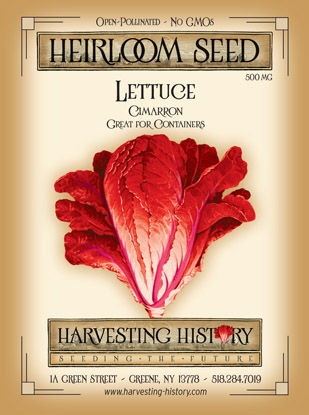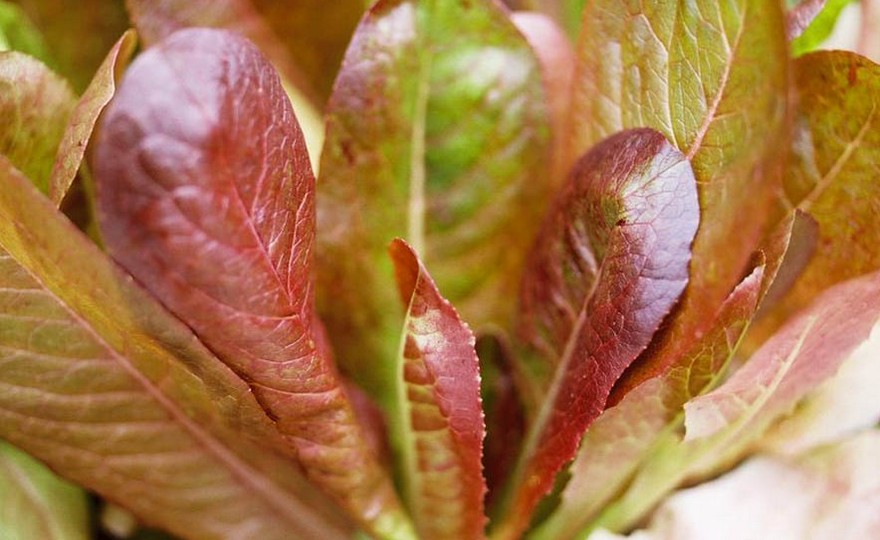
Lettuce, Cimarron
-
- **SOLD OUT** HOLIDAY GIFTS **SOLD OUT**
- **SOLD OUT** Holiday Books **SOLD OUT**
- **SOLD OUT** Holiday Citrus **SOLD OUT**
- **SOLD OUT** Holiday Gift Certificates **SOLD OUT**
- **SOLD OUT** Holiday Paperwhites **SOLD OUT**
- **SOLD OUT** Holiday Praying Mantis Kits **SOLD OUT**
- **SOLD OUT** Holiday Tools **SOLD OUT**
- **SOLD OUT** Holiday Wildflower Mixtures **SOLD OUT**
- Citrus Trees
- **SOLD OUT** - Vegetable and Herb Plants - Mix & Match any 6 Plants for $50 - Only Shipped in Quantities of 6
- Elephant Ear Plants & Roots
- **SOLD OUT** 4-Inch Pot Herb Plants **SOLD OUT**
- Rare Plants
- **SOLD OUT** Vining Plants **SOLD OUT**
- Asian Seeds
- Beneficial Bugs
- Books
- Citrus Fertilizers
- Cold-Treated Bulbs - SEE BULBS FOR FALL PLANTING TO ORDER
- Cold-Treated Allium
- Cold-Treated Chionodoxa
- Cold-Treated Crocus
- Cold-Treated Hyacinthoides
- Cold-Treated Hyacinthus Orientalis
- Cold-Treated Narcissus
- Cold-Treated Cyclamineus Narcissus
- Cold-Treated Double Heirloom Narcissus
- Cold-Treated Jonquilla Narcissus
- Cold-Treated Large Cupped Narcissus
- Cold-Treated Poeticus Narcissus
- Cold-Treated Small Cupped Narcissus
- Cold-Treated Species Miniature Narcissus
- Cold-Treated Split Cupped Narcissus
- Cold-Treated Tazetta Narcissus
- Cold-Treated Triandus Narcissus
- Cold-Treated Trumpet Daffodils
- Cold-Treated Ornithogalum
- Cold-Treated Rock Garden Iris
- Cold-Treated Scilla
- Cold-Treated Tulips
- Cold-Treated Emperor Tulips
- Cold-Treated Fringed Tulips
- Cold-Treated Green or Viridiflora Tulips
- Cold-Treated Lily Flowering Tulips
- Cold-Treated Parrot Tulips
- Cold-Treated Peony Flowering Tulips
- Cold-Treated Single Early Tulips
- Cold-Treated Single Late Tulips
- Cold-Treated Species Tulips
- Cold-Treated Triumph Tulips
- Flower Bulbs, Corms and Tubers
- Bulbs for Spring Planting
- Bulbs for Fall Planting - ALL BULBS AVAILABLE ARE COLD TREATED FOR PLANTING AS SOON AS SOIL CAN BE WORKED
- Fall Blooming Bulbs
- Garden Tools & Equipment
- Gift Certificates
- HHH Exclusive Wildflower Mixtures
- Wildflower Mixtures
- Heirloom Garlic
- Potatoes
- Roots & Sets
- Seeds
- Flowers
- Herbs
- Vegetables
- **SOLD OUT** HOLIDAY GIFTS **SOLD OUT**
-
- No products to compare
-
74 in stock
Quick Overview
LETTUCE, Cimarron –
Lactuca sativa var. longifolia
FULL SUN Native to many areas of the world, lettuce has been cultivated since, at least, the 6th century BC. It is a staple food crop for most of the world’s cultures. Cimarron, introduced in the 1700s, may be the most beautiful romaine lettuce grown with pink veins and bronze leaves. Heads can grow to 12 in. tall and 4 in. in diameter, but this lettuce is best harvested young before heading. Superb flavor. Cimarron can be sown in the early spring for a summer crop and in mid-summer for a fall-winter crop. In the spring, plant as soon as the ground can be worked. Soil should be deeply spaded before planting. Rows should be 12-18 in. apart. When seedlings are 2 in. high, thin, leaving 8-12 in. between plants.
Adding lime to the soil before planting will sweeten the lettuce.
| Type | Spacing | Planting Depth | Days to Germination | Maturity |
| Romaine | 8-12 in. | 1 in. | 14-21 | 65 |

Lettuce, Cimarron
Lettuce appears to have been domesticated from a weedy species of wild lettuce that produced lettuce leaves on the top of a tall stem. Evidence which supports this theory comes from Egyptian tomb paintings dating back 4500 years which show bundles of stem lettuce being transported.
The first written accounts describing lettuce are from Herodotus, who wrote that lettuce appeared on the royal tables in Persia in 550 BC. The Greeks, including Hippocrates, ascribed medicinal properties to lettuce, and the Romans wrote extensively about it including Pliny who described nine varieties grown in Roman agriculture. It was probably the Romans who introduced lettuce into northern and western Europe.
The Romans popularized a tall cylindrical form of head lettuce which they found growing on the Greek island of Cos. This particular form of lettuce became so popular in Rome that it took the name, “romaine” named after the Eternal City. Romaine lettuce is still often referred to as “cos lettuce” in honor of its original birthplace, the Greek island of Cos.
Lettuce was among the first vegetables brought from Europe to the New World. In 1494, its presence on Isabela Island is mentioned in the writings of Peter Martyr. This suggests that Columbus may have brought the vegetable on his second voyage.
In the early years of the United States, an assortment of lettuces were grown. Head lettuce includes the Crisphead or cabbage type and the Butterhead, the floppy-headed type also known as Bibb or Boston. The leaf lettuce also known as cutting lettuce is a non-heading type which forms rosettes of curled or fringed leaves. Romaine or cos lettuce forms tall cylindrical heads of elongated oval leaves.







